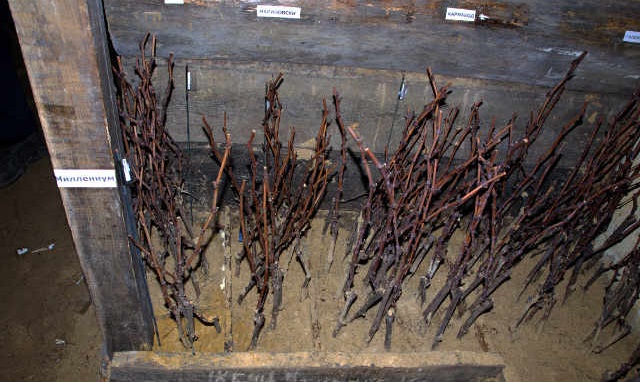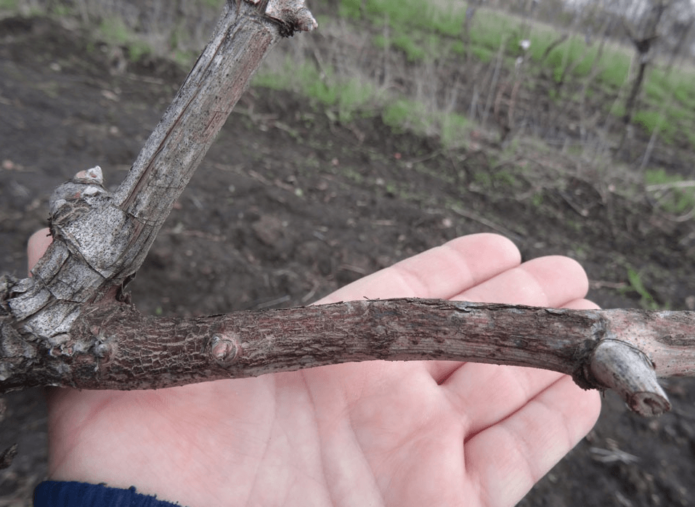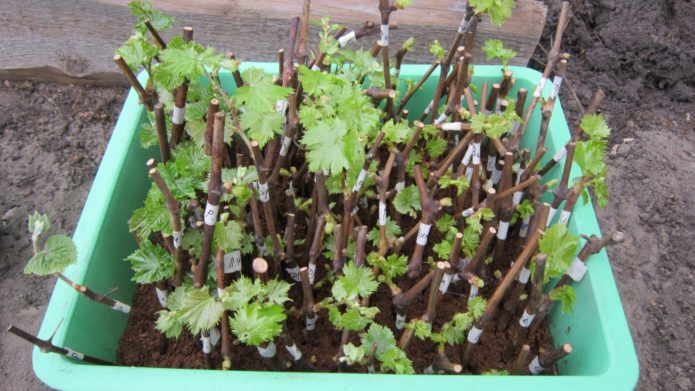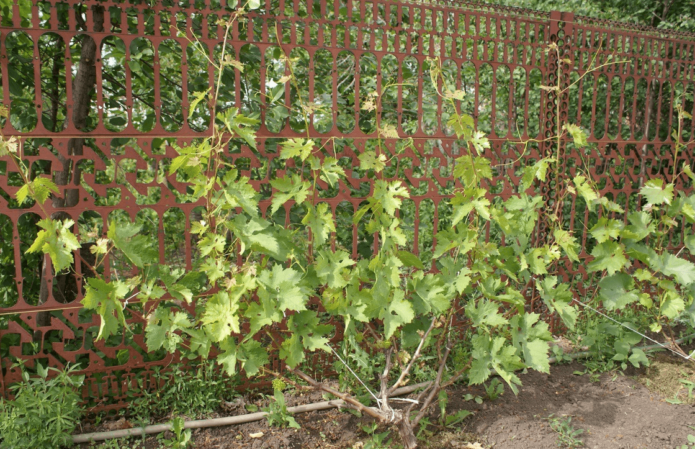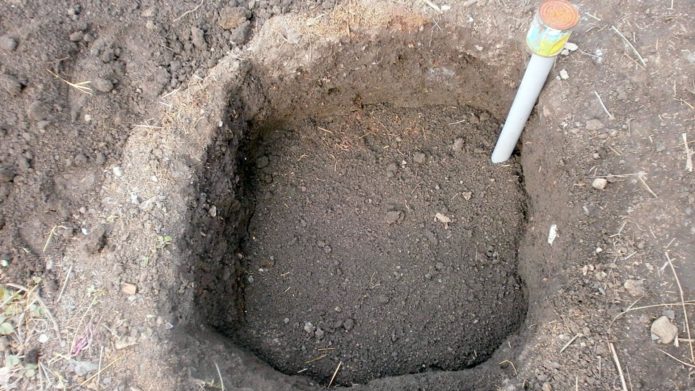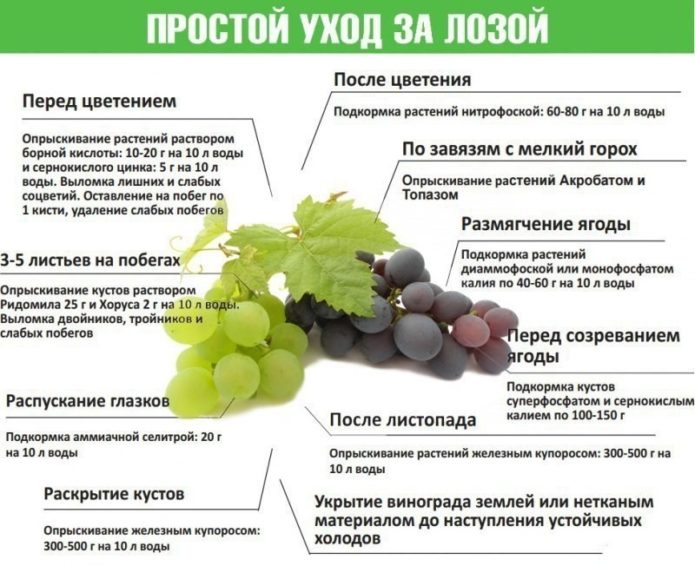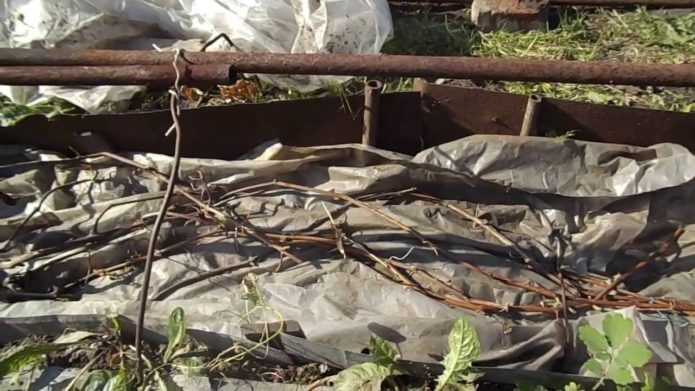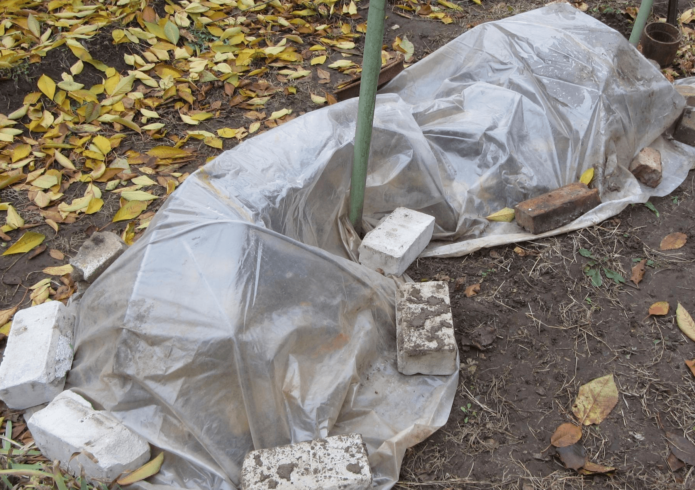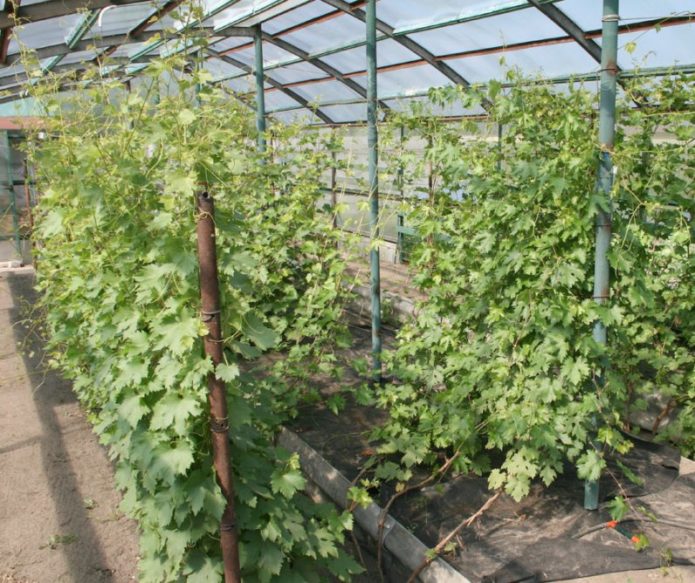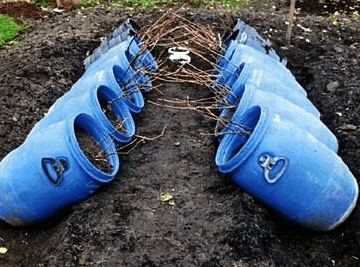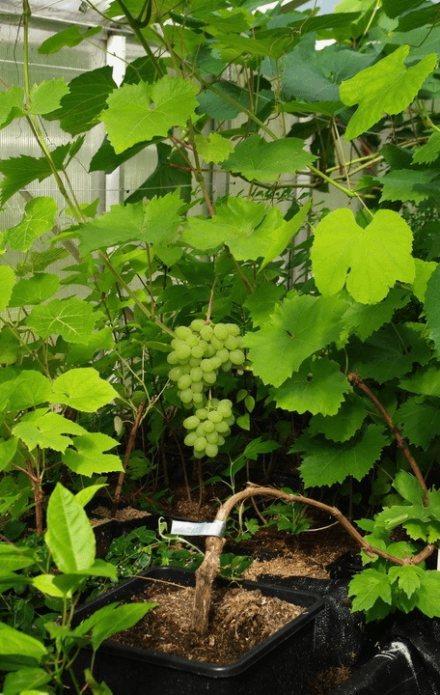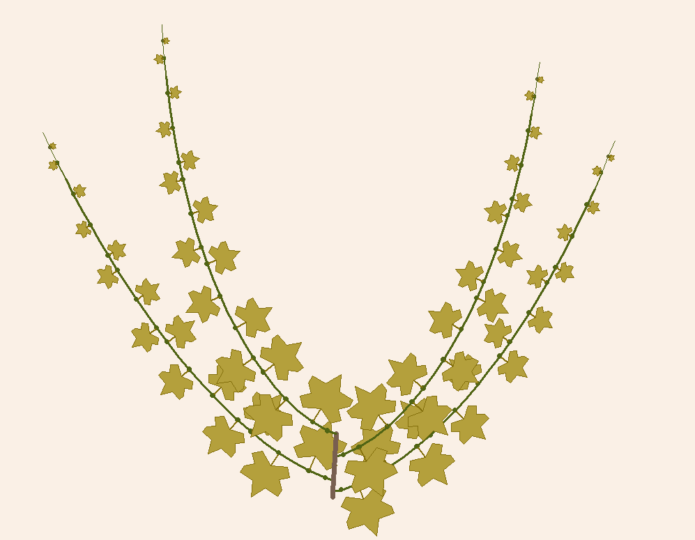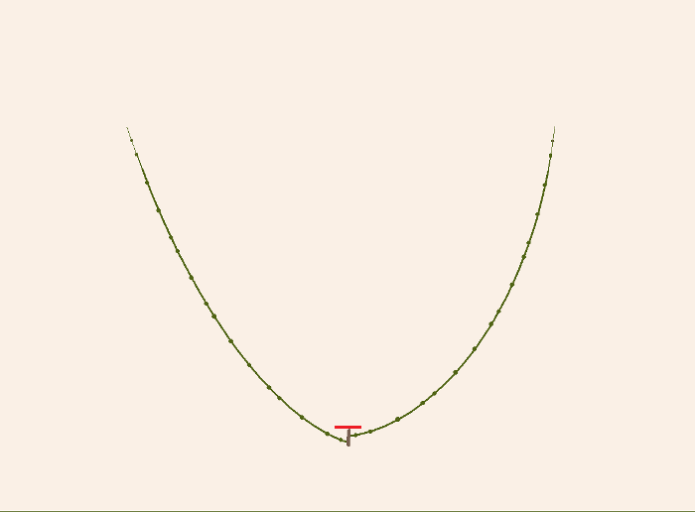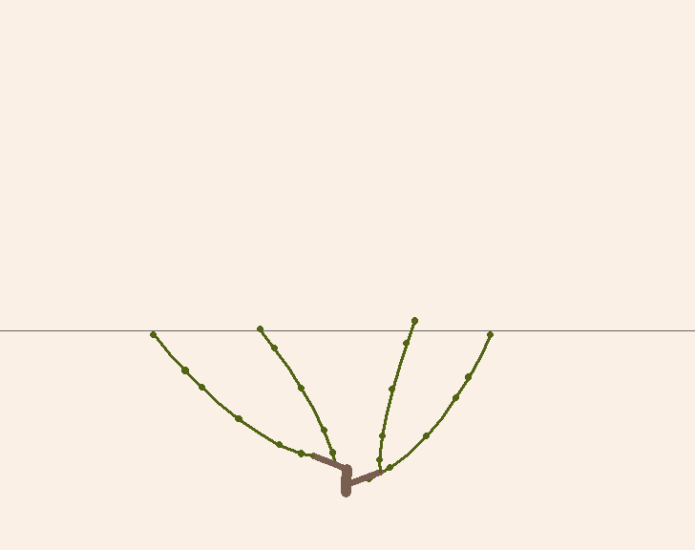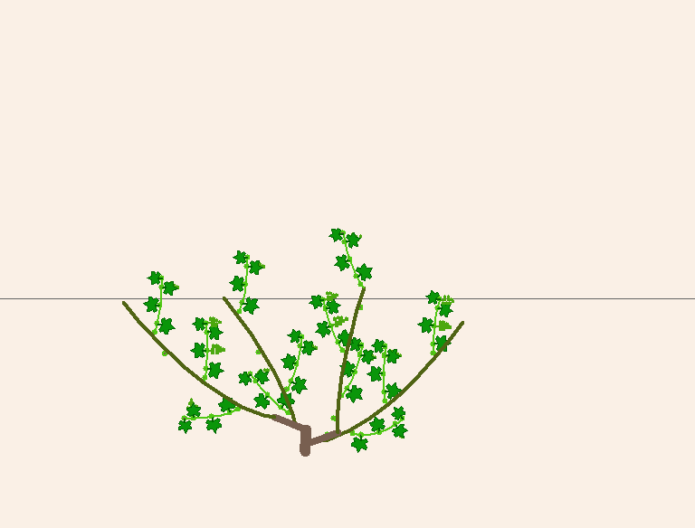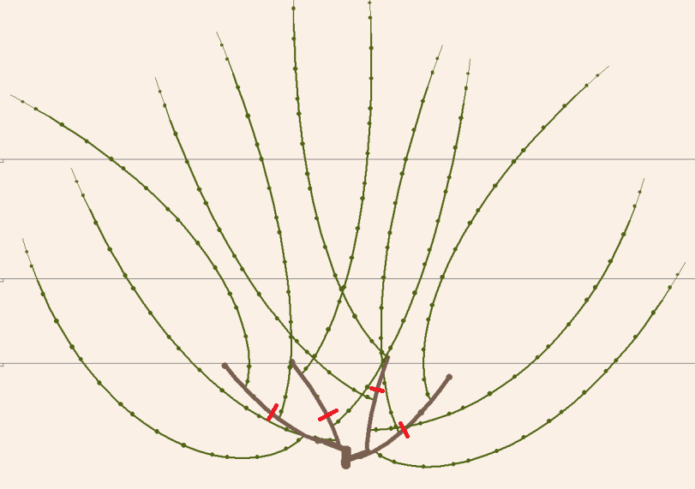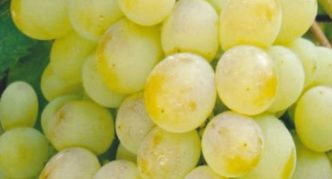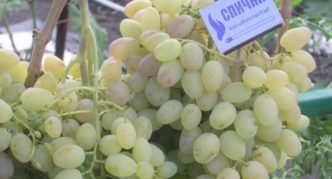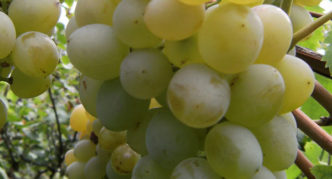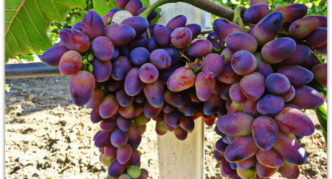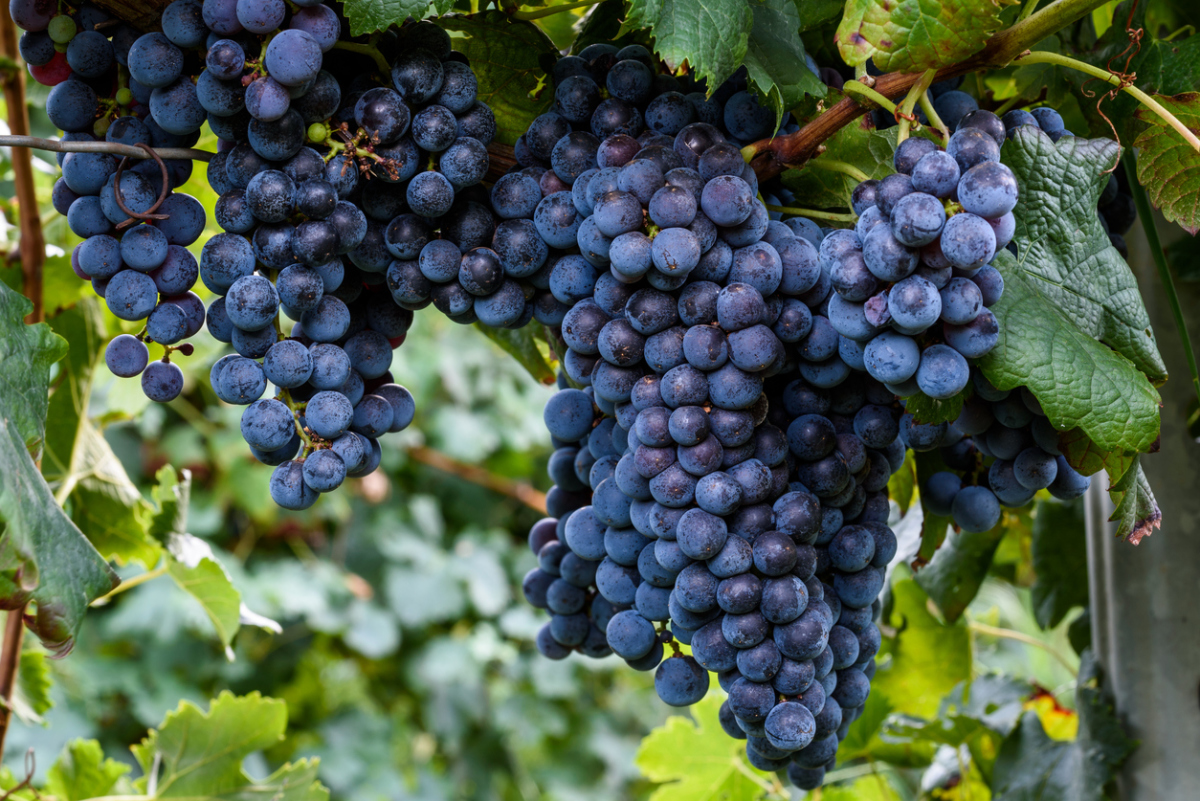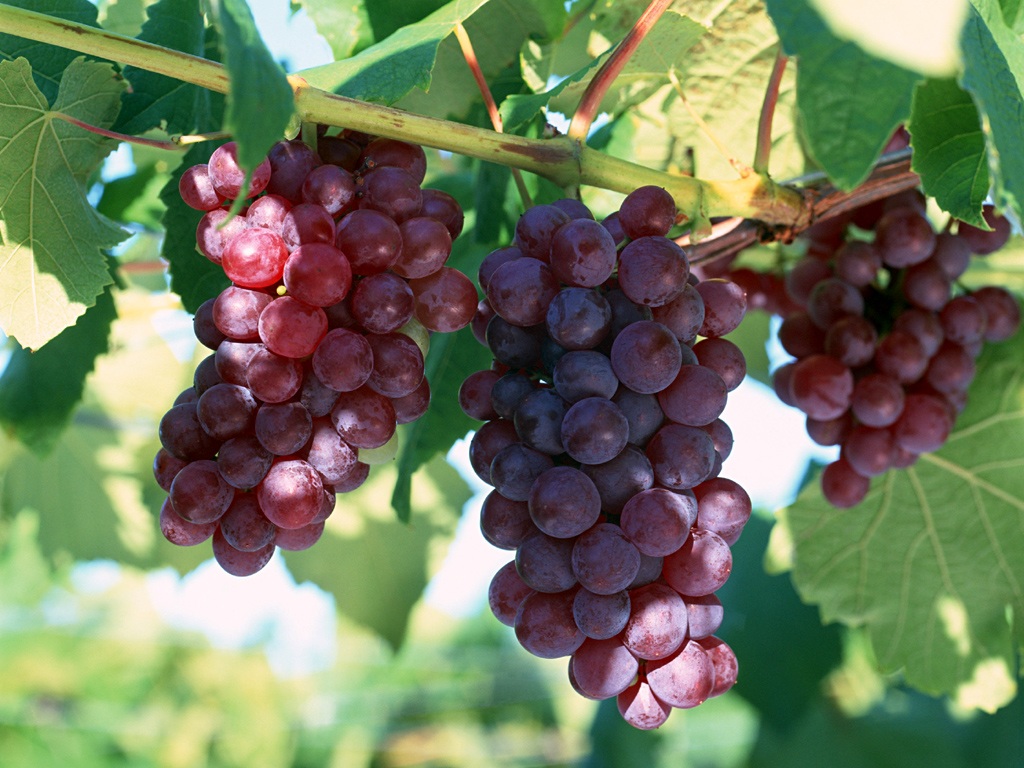Novice gardeners in Siberia are suspicious of viticulture. However, the matter is worth it, especially provided that the varieties of this crop are correctly selected and the cultivation technology is observed. Not so long ago, the choice of grape varieties for harsh climates was not so great. Nowadays there are new grape names that are perfectly adapted to growing in cold regions, and with some effort in Siberia, you can get a good harvest of wine berries.
Content
The history of grape cultivation in Siberia
Success in growing grapes in a harsh climate did not come immediately. Gardeners, when trying to grow a crop of sweet berries, had certain difficulties:
- the plants could not resist the harsh weather conditions and froze out;
- unexpected frosts in the spring could come after the removal of the shelter from the vineyard and the beginning of the opening of the buds and destroy the entire crop;
- under the influence of early frosts, summer growth perished in autumn.
In addition, one of the main factors of failure was the lack of experience among gardeners: they unknowingly used agricultural techniques that were used in the southern regions and were completely unsuitable for Siberia. The long-awaited success in Siberian viticulture came to the Altai agronomist V.K. Nedin, who received a fairly high-quality grape harvest, not inferior to its southern counterpart. The subsequent success was accompanied by the winegrowers of the city of Biysk. As a result, modern systems of Siberian viticulture were created experimentally. They include all stages of working with a crop - from growing seedlings to storing crops.
Reproduction and planting of grapes in Siberia
It is possible to grow grape seedlings and propagate the plant in the Siberian climate by grafting. And if in the southern regions grapes are grafted to get rid of phylloxera (an insect from the aphid family), in Siberia, where there is no phylloxera, the need for a grafted culture is caused by soil freezing.Winter frosts here reach -50 ° С, and soils, especially sandy ones, freeze considerably during winters with little snow. However, the need for grafting depends on the thickness of the snow. In those regions of Siberia, where there is little forest and strong winds blow, the snow blows away and unvaccinated grapes can freeze out - vaccination is required. In areas where the snow cover is stable, grapes can be grown and propagated on their own roots.
Early thermophilic varieties are used as a scion (a plant, part of which is grafted to another to give it new properties), and cold-resistant Amur or American varieties are used as a stock (a plant to be inoculated) - on their roots, and grafting is done. Winter-hardy grape varieties are bred by means of own-rooted (cuttings or root shoots obtained by rooting) cuttings.
Saplings obtained by grafting begin to bear fruit earlier than their own rooted ones: their berries appear already in the third year of cultivation.
Where to get a seedling
It is quite difficult for a beginner to prepare a grafted seedling on his own. In this connection, it is recommended to purchase ready-made planting material in proven nurseries.
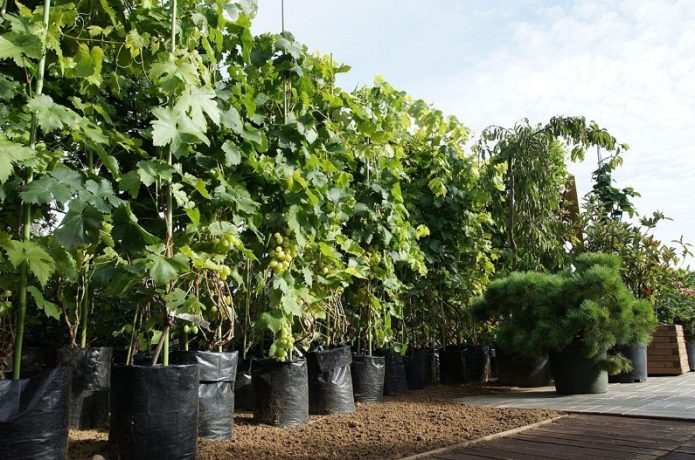
It is better to purchase two-year-old grape seedlings for planting, in which part of the vine is lignified, brown
If the seedlings are purchased in advance, they are grown in a sunny area, subjecting to hardening. Plants are rarely watered, but abundantly, trying not to flood the soil in pots. After planting in a permanent place, the seedlings are protected from sunlight for 5-7 days.
Propagation of grapes by cuttings, technique and method features:https://flowers.desigusxpro.com/en/yagody/vinograd/kak-razmnozhit-vinograd-cherenkami.html
How to store grape seedlings
Rooted cuttings with at least 4 buds - this is the planting material that is usually used by the growers of Siberia. Such a seedling most often has a closed root system in a plastic container or the root system is located in a cut out block of soil. One- or two-year-old seedlings are purchased in advance in the spring. Further, they act depending on the age of the plant:
- a one-year-old seedling is placed in a spacious container by transferring it for growing up to a year. Planting grapes are stored in unheated, but frost-free rooms;
- a pot with a two-year-old seedling is kept on a windowsill, a closed balcony or in a greenhouse until the end of the frost.
How to prepare seedlings for planting
Plants begin to prepare for planting in the spring before bud break. The procedure is as follows:
- First, they are examined for disease damage. Usually during storage, cuttings can be affected by gray rot, black spot, spotted necrosis. These diseases can even lead to the death of the planting material. Black spot is especially dangerous - it causes necrosis of living tissues of cuttings and discolors the bark.
- Sick cuttings are thrown away, and in healthy cuttings, the aerial part of the bush is shortened, keeping 5–6 buds on it.
- With the onset of warm days (air temperature from +18 ° C and more), the seedlings begin to harden - they are taken out into the street under the open sky. The duration of this procedure is at first 1 hour, gradually the hardening time is increased by a period equal to daylight hours. At night, the cuttings are brought into a warm room.
- One day before planting, potted plants are well spilled with water. If a seedling has an open root system, before planting, its roots are dipped in a clay mash, which is a mixture of mullein (1 part) and clay (2 parts).Such pre-planting treatment of the seedling roots has a beneficial effect on the rooting rate of the plant and on its growth in general.
What place to choose for grapes on the site, taking into account predecessors
The grapes are cultivated in warm, sheltered from the wind and sunny places. In winter, in such a territory, snow should accumulate in the required volume, and with the arrival of spring, it should not be flooded with flood waters. The lowlands are not suitable for planting grapes: they collect cold and humid air, which is detrimental to the southern culture.
Techniques to improve vine ripening and berry ripening:
- places are allocated for the vineyard from the southern surfaces: walls of buildings, fences. In this case, fences, for example, are specially painted in white paint, which contributes to light reflection;
- use temporary shelters made of different materials (films, spunbond, and others);
- for better heating of the soil, it is mulched with dark materials.
The best precursors for grapes are legumes (peas, beans, beans), squash and pumpkins, onions, garlic, radishes and radishes, and parsley. Do not plant grapes after or near cabbage.
Perhaps the most inconvenient in growing it is just a shelter for the winter, otherwise growing grapes does not present any particular problems:https://flowers.desigusxpro.com/en/yagody/vinograd/vinograd-na-dache.html
How to prepare a landing pit
Grapes do not impose increased requirements on the soil, but they do not need to be planted on saline soils and where groundwater rises high. For Siberia, deep planting of grapes is preferable, for which pits / trenches for planting are torn to a depth of up to a meter. Dimensions:
- landing pit - 1 m (depth) × 80 cm (diameter);
- the distance between the pits is 2 m;
- row spacing - within 2-3 m.
They make a landing pit in this way:
- The bottom of the pit is equipped with drainage (15 cm), covered with fertilizers (organic and complex). Fertilizers are especially necessary when the soils on the site are depleted - sandy or with a predominance of clay.
- After the drainage layer (gravel), put humus or compost. On it - a mixture of garden soil, sand and humus, tamped. In this case, the upper part of the pit (15 cm) is left unfilled with soil mixture, since the bush should grow in a small depression. Such a measure in the future will facilitate care, in particular, sheltering the shoots in case of cold weather.
Video: preparing a pit and soil in it for planting grapes
How to plant a grape seedling
When the air in the Siberian region warms up to +18 ° C in spring, they begin to plant grape seedlings on the site. Winter-hardy varieties are planted in the fall.
Transplanting a seedling from a pot into a pit is as follows:
- The plant is carefully removed from the pot with a lump of earth, being careful not to shake the earth from the roots.
- In the hole, the plant is placed obliquely on the side into which the bush will roll in the fall for laying and covering it before wintering.
- The seedling is deepened to the first green petioles (cover the entire lignified part) and sprinkle it with earth.
- Water at the rate of 1–2 buckets for a seedling.
- The soil is mulched in the near-stem circle.
Video: planting a Siberian seedling
Grape care in Siberia
Fruit grapes in the Siberian region must go through a tough school of education, involving the supply of food and drink in small doses. In other conditions, he simply will not be able to take root and grow in this climate.
An indisputable advantage in the cultivation of a vineyard in Siberia is that most of the pests and ailments typical of southern varieties are absent here and do not affect plants. Because of this, caring for grape plantings is somewhat easier.
What and when to feed the vine
If the seedling was planted in a hole that was fertilized with humus, the bush is able to do without feeding for three years. And only in the fourth year of life in the spring, a bucket of manure or humus is placed under the plant. Frequency rate of organic dressings - once a year. Mineral fertilizers are fed more often:
- after the opening of the bushes in the spring;
- after opening eyes;
- before and after flowering;
- during the ripening of berries;
- and the last time - after the leaves fell.
Until the cabbage has bloomed, it is recommended to treat the vine with boric acid in combination with zinc salt, taken in equal proportions (5 g each) per bucket of water. You can use potassium sulfate for grapes, compositions from the Kemir company. Introducing complex mineral dressings, you should gradually reduce the percentage of nitrogen in them for maximum ripening of the vine.
Irrigation schedule
The volume and amount of irrigation is determined by the type of soil under the crop. If grapes are planted outdoors, it is believed that in cold climates 4–5 waterings per season are enough for them.
In autumn, water charging is required. In October, the vineyard is watered, spending 50–80 liters of water per square meter for young growth and 100–150 liters for age bushes. After such irrigation, deep soil layers are saturated with moisture, which prevents the risk of grape roots freezing.
Pruning grapes
Siberian grapes are pruned in a special way: they form a squat bush with shortened arms (perennial branches that grow throughout the life of the vine and lengthen every year due to the shoots left during pruning). The number of stored sleeves depends on the variety of the plant. For vigorous bushes, this figure is 5–8 pieces, for an average plant height - 2 pieces.
Autumn pruning of grapes in Siberia it is considered preferable to spring. It consists of two stages.
The first stage of pruning
Having removed the crop, they revise the shoots. At the same time, the old, damaged, unripe, fertile ones must be removed. Get rid of tops and stepchildren. The bushes planted in the current season are not pruned.
Video: removing stepchildren from grapes of the second year of life
A mature vine is a branch with a green core. She is ready to overwinter. On an unripe vine, the middle is white; such a vine is removed.
The number of shoots that are kept on a bush depends on its age:
- for a young plant (3-5 years old), 2-3 sleeves are retained;
- for a six-year-old - 4 shoots;
- for seven years and older - 6-8 sleeves.
Second stage of pruning
Before the winter shelter, they begin the second pruning step, forming fruit arrows (vines). One arrow is kept on the sleeve, creating 4 buds from it. One kidney is left on the stepsons. For sleeves of an old vine with strongly overgrown arrows, 2 arrows from different buds and at an unequal height from the root are preserved.
After the spring frosts, the grape bushes are tied up, and the load for each plant is immediately determined. On a young plant, 3-5 large brushes with inflorescences are left, on an age plant - about 10 with small fruits. The clusters are left from below, the apical ones are torn off.
In the first year, it is recommended to pick off all flowers, in the second season - save up to 5 pieces, in the 3rd - up to 10 (5 kg of harvest), in the 4th - 20 pieces, in the 5th - 40 inflorescences (up to 20 kg of harvest ).
Video: pruning age bushes in Siberia
Preparing the vineyard for winter
In the fall, all fallen leaves are cleaned from the vineyard trenches, water-charging irrigation is carried out, the soil and vine are sprayed with dissolved iron sulfate to prevent rot. The best way to create a shelter for a vineyard in Siberia is an air-dry method in which the shelter does not touch the vines. It consists of the following steps:
- Sleeves and arrows are bent to the ground by means of bent wire rods to a height of 20 cm. If it is impossible to exclude the sleeve touching the ground, polyethylene is underlain under it.
- Next, U-shaped arcs are stuck in, which are also designed to pull the plant closer to the soil surface, with a step of 65 cm.
- Tying them with twine, cover the vines with a double folded thick film.
- A layer of foam rubber (or any insulation material) is arranged on top of the polyethylene, and roofing material is placed on the foam rubber in a double layer.
- Weighting agents (for example, bricks) are placed on the edges of such a "sandwich".
Video: creating a shelter for vines before wintering
It is unacceptable to sprinkle the vine with straw, dry foliage, sawdust or compost - such material, heating up, spoils wood and eyes, attracts mice.
During the autumn preparation of the vineyard, means of snow retention are also provided (old slate, boards from boards, plywood).
The purpose of the shelter of the vineyard is to preserve the aboveground parts of the plant and the roots from freezing. If the freezing of the vine can lead to the loss of the upcoming harvest, then damage by the frost roots threatens the death of the entire bush. It is necessary to protect the wineries not only from winter cold, but also from recurrent spring frosts:https://flowers.desigusxpro.com/en/yagody/vinograd/kak-ukryvat-vinograd-na-zimu.html
Methods of growing grapes in Siberia, including in the open field: features for beginners
Cultivation of grapes in open ground in the Siberian climate causes many problems for novice winegrowers, and therefore they refuse to grow grapes in unprotected ground, choosing the option of greenhouse cultivation. However, the agricultural technology of a vineyard outdoors in cold regions is quite simple, enough:
- weed planting from weeds,
- water occasionally,
- make top dressing,
- keep the aisles in order (periodically mow the grass).
There are no treatments for pests, since they are almost not observed in Siberia.
On a long vine
The grapes are planted in rows, the orientation of the rows is from north to south. To grow grapes on a long vine, it is necessary to have supports, for which pillars (about 2.5 m high) are dug into the ground, and a wire is pulled between them at different heights.

To grow grapes on a long vine, pillars are dug in, and a wire is pulled between them at different heights
In the greenhouse
In conditions of protected ground, the vine develops well, grows well, pleases with an excellent harvest. Technologically, the cultivation of a greenhouse culture is somewhat different than in the open field.
A greenhouse structure for grapes is required rather high - at least three meters. It is good if it is a solid structure with heating and lighting devices.
When growing grapes in a heated greenhouse, you should take into account the need of this crop for heat in different phases of the growing season so that the plants do not experience stress and give the maximum yield. The temperature regime inside the greenhouse is regulated by heating and ventilation. Optimum temperature indicators for grapes are not the same at different stages of growth:
- during the budding phase in spring, the vine needs warmth within + 10–20 ° C during the day and over +8 ° C at night;
- in the phase of the appearance of inflorescences, the column on the thermometer should already rise higher: up to +25 ° C during the day and +15 ° C at night;
- it should be even hotter in the greenhouse during the fruiting phase: up to +30 ° C during daylight hours and up to + 18–20 ° C at night.
Even if varieties adapted for greenhouses are planted, the plants should be pollinated by hand in a timely manner.
The question of the removal of leaves shading the bunches, as well as the embossing of shoots (removal of the upper part of the growing shoot with leaves) is decided individually in each case. The soil in the greenhouse must be enriched with nutrients in a timely manner. Watering is plentiful.
With systematic ventilation of the greenhouse, a rather dry climate is established inside, in which grapes are not afraid of diseases. For preventive purposes, treatment is carried out with a solution of potassium permanganate or through systemic drugs.
On the trellis
When growing grapes on a trellis, two options are possible:
- near the walls, the landing rows are oriented from west to east, and the trellis is constructed in one plane;
- in free space, the landing is oriented from north to south, the trellis in this situation is built in two planes, V-shaped.
To get the maximum yield in the conditions of the Siberian region, the grape bush is formed vertically on a wire trellis, giving it a heart-ray shape.
In barrels
The peculiarity of barrel cultivation of grapes is that the place of growth of a seedling is not a garden area, but a limited space. In this case, the barrel is installed in any part of the garden area. For a cool climate, growing vines in a barrel is the best fit, since in winter the plantings are warm and completely protected from frost. Vines are protected in winter in one of two ways:
- buried earth in a trench, a barrel with a vine laid obliquely;
- transfer the container with the plant to an unheated (but not freezing) room.
With the onset of warm days in April, the barrels are taken out of the cellar and transferred to the greenhouse. In May, the grapes bloom, and in June, barrels with them are transferred from the greenhouse to the street and installed on the south side of the building.
It is important to provide the plants with a little shade so that the roots of the grapes do not grow too vigorously. If the seedling has successfully overwintered and entered a new cycle of its vegetative development, and the gardener met all the above conditions, then in July it is already possible to wait for the first harvest.
It is better if the volume of the barrel is 65–70 liters. Such container parameters are suitable for filling it with 50 liters of soil mixture. After 8–10 years, the barrels can be dismantled, and the grapes can be planted in open ground.
Before planting, the container is prepared:
- First, about 40 holes with a diameter of 10 mm are drilled in the bottom.
- The first is the drainage layer (brick chips, expanded clay).
- Fertile soil is poured over it.
In extreme heat from the second half of July, the barrels are covered from the sun in order to avoid overheating and oppression of the root of the grapes. After three years, barrel plants are fed with complex minerals, and the soil is added. Watering is done once a week.
This method, in addition to the obvious advantages, also has disadvantages:
- laboriousness of the process (transferring a heavy barrel from place to place, regular excavation work in the case of digging barrels for the winter);
- the need for plant shading products;
- the possibility of planting only low-growing varieties in a container.
In containers
Containers are built like trenches, with only one difference - the first are placed above the ground. The walls of the container are insulated with a clay solution to avoid freezing of the roots during frosts. In containers, the growing season for grapes begins 10-12 days earlier. It is convenient to use this method when planting grapes in a greenhouse.To do this, use plastic containers with a capacity of 5–20 liters.
In the spring, the container with grapes is placed in the greenhouse until the threat of recurrent frosts has passed. After the onset of heat, the plants are taken out to the warmest and lightest places in the garden. For the winter, containers are buried in, and the vine is covered.
Stampless fan forming of grapes
Standard grapes are usually not grown in cold climates. For Siberia, the formation of grapes in a standard-free form is characteristic - in the form of a fan. It is easier to care for such a bush, it is easier to lay it on the ground to create a protective shelter.
The procedure for the formation of a grape bush in a standard fanless form is as follows:
- A young bush planted in the current season is covered in autumn, leaving all shoots on it, that is, pruning is not carried out.
- Pruning is carried out next spring in the phase of bud opening. Cut off the central trunk and leave 2 sleeves at the bottom.
- On the two lower sleeves, 2 buds are left from the trunk on each, the rest is cut off. It turns out 2 knots with 4 kidneys.
- In autumn, the bush of the second year of life is not cut off, covering for the winter with two or four grown arms.
- In the third year of life in the spring, all the shoots of the bush are cut into 5-6 buds. The length of the knot will depend on the length of the internodes - somewhere around 55–70 cm. Tie to the bottom wire, forming a 4-arm fan.
- During the growing season, 3 young branches are grown on each arm, the rest are disposed of. Moreover, they retain one lower branch outside the bush (25-30 cm from the base), and the other two from inside the bush.
- In the summer, in the third year of the bush's life, the first berries are harvested. To do this, leave 1 inflorescence on the shoot from below.
- After the completion of fruiting, the bush is cut in the fall of the third year, creating a fruit link from each sleeve.
According to this scheme, a bush is formed in a fan shape. In this case, a plant is formed with arms extending from the base (head) of the bush. So, for a V-shaped two-plane trellis and a feeding area of 2–2.5 m, forming is carried out in 6–8 sleeves, and for a single-plane vertical trellis with 3-4 tiers (180 cm high and a landing area of 1.5 m on a bush retain 2–4 sleeves.
Growing different varieties of grapes in Siberian conditions: features for beginners
If a thermophilic variety is planted in Siberia, it will stagnate, get sick, grow poorly wood, and ripen poorly, even though in summer the temperature indicators in the Siberian latitudes are not much different from the Krasnodar Territory.
Western Siberia is characterized by a high continental climate, and in Eastern Siberia, the relief of the territory has a great influence on the climate. Winter lasts long here and summer is short.
Fruit grape varieties
However, early and some mid-ripening grape varieties are able to bestow a harvest on Siberian gardeners, provided that various methods of protection are used.
Delight
Early maturing table grapes. Its berries are egg-shaped, they are large, light, pink or reddish in color, with fleshy pulp and thin skin. They have a harmonious and pleasant taste. Brushes weighing up to 830 g. The variety is quite frost-resistant - up to -25 ° C, resistant to diseases.
Tukay
The table variety of grapes is distinguished by vigorous cylindro-conical clusters, reaching a weight of 800 g. The berries are round, white, and have seeds. The variety has poor disease resistance. But the frost resistance is the same as that of Rapture.
Beauty of the North
This is a hybrid, its parent varieties are Zarya Severa and Taifi pink. Bunches ripen early, their weight is up to 300 g, they are conical or branched. The berries are oval in shape, with a white-pink tint. Good resistance of the variety to gray rot is noted. Excellent frost resistance - down to –28 ° C.
Riddle
An early variety with a ripeness period of 110 days (in a greenhouse it ripens two weeks earlier). The riddle is recognized as the best variety for growing in the harsh conditions of Siberia. And for a reason: the weight of one brush is about 900 g (sometimes 1.7 kg), high frost resistance - up to –25 ° C. The berries at the Riddle are medium in size and have a dark blue skin with juicy pulp.
Photo gallery: grape varieties for Siberia
- Delight is a cold-resistant variety with large clusters (up to 830 g)
- Hybrid variety Krasa Severa with good winter hardiness (down to –28 ° C) is characterized by early ripening of bunches - 100–110 days
- Tukay grape variety is poorly resistant to diseases
- The Riddle grape variety is most often chosen by gardeners for planting in Siberia
In addition, the following grape varieties are called promising for cultivation in Siberia:
- Very early elegant;
- Harold;
- New gift to Zaporozhye;
- Codryanka;
- Beauty of Nikopol;
- Amethyst Novocherkassky;
- Pink Timur;
- Galahad.
When choosing one of the proposed varieties, there is a chance that the vine grown under the conditions of the shortened Siberian summer will have time to ripen and prepare for the upcoming wintering.
Maiden grapes
The maiden grape is a woody liana with beautiful foliage and bluish-black fruits. This grape variety is quite winter hardy. However, it is not because of the berries that they strive to have these grapes on the site, since they are not edible for him. The need to plant maiden grapes arises when the gardener needs to disguise unsightly buildings and objects.
Through it, you can decorate a gazebo, balcony, open veranda. The plant creates shade and serves as additional protection from bad weather - rain and gusty winds. In autumn, the foliage of the maiden grapes is repainted in red and orange shades, pleasing to the eye and raising the mood. In addition, this species is praised for its quick survival rate after planting.
There are varieties of maiden grapes:
- virgin (five-leafed) - the leaves of this variety resemble chestnut leaves, the vine grows up to 15 m in height;
- ivy - grown horizontally (on the ground) and vertically.
The Virginia variety is found in the wild in North America. Excellent frost resistance allows it to be cultivated even on lands located in Western Siberia. The Don Juan variety is valued here, growing up to 20 meters in height.
Cold-resistant varieties grown in Siberia are not picky in care (a minimum of watering, dressing, treatments), but they cannot do without a reliable shelter for the winter. Grapes in this region are easier to grow than some other crops. And the volume of berries can be much larger than any traditional berry bush gives.
